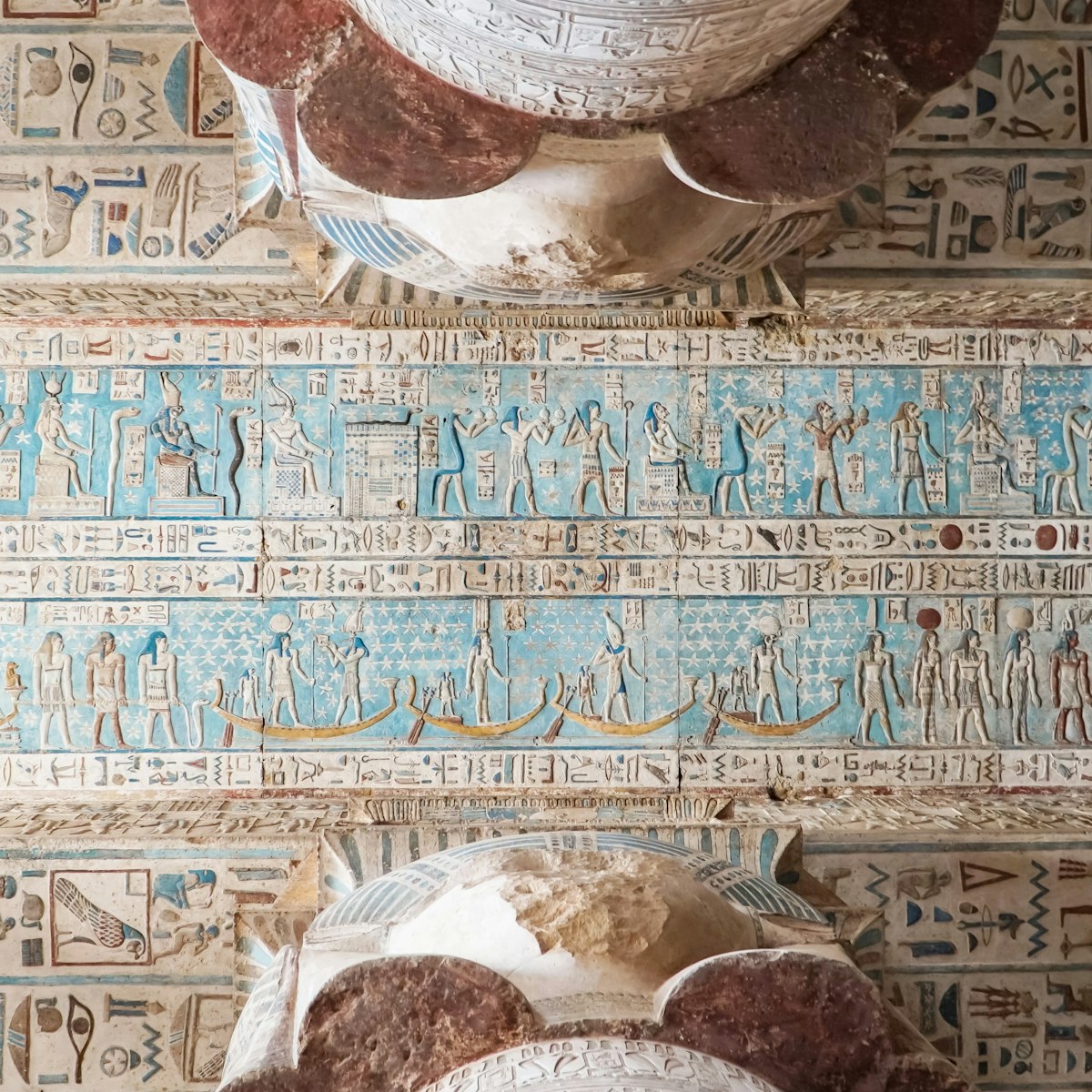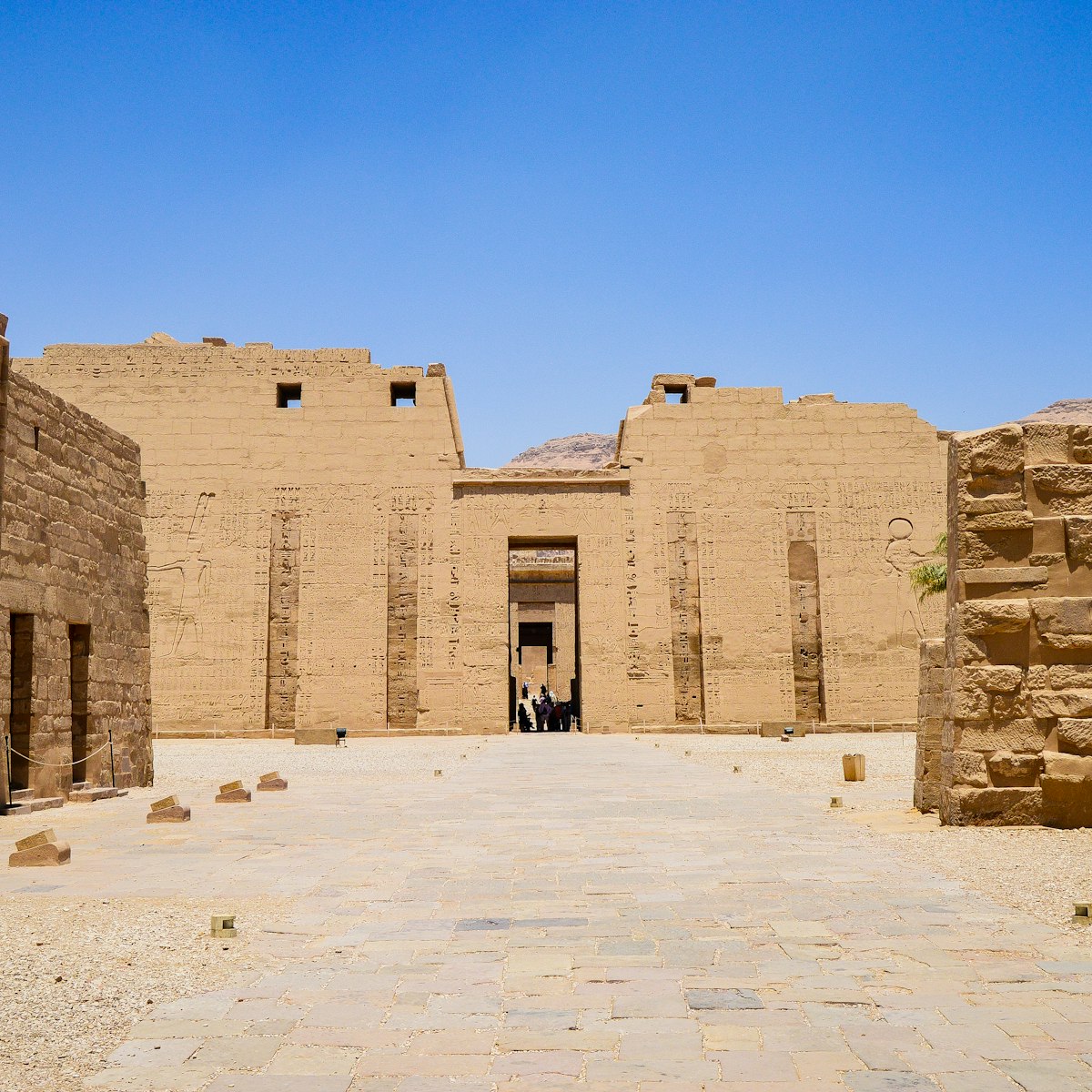The two faceless Colossi of Memnon, originally representing Pharaoh Amenhotep III, rising majestically about 18m from the plain, are the first monuments tourists see when they visit the west bank. These magnificent colossi, each cut from a single block of stone and weighing 1000 tonnes, sat at the eastern entrance to the funerary temple of Amenophis III, the largest on the west bank. Egyptologists are currently excavating the temple and their discoveries can be seen behind the colossi.
The colossi were already a great tourist attraction during Graeco-Roman times, when the statues were attributed to Memnon, the legendary African king who was slain by Achilles during the Trojan War. The Greeks and Romans considered it good luck to hear the whistling sound emitted by the northern statue at sunrise, which they believed to be the cry of Memnon greeting his mother Eos, the goddess of dawn. She in turn would weep tears of dew for his untimely death. All this was probably due to a crack in the colossus’ upper body, which appeared after the 27 BC earthquake. As the heat of the morning sun baked the dew-soaked stone, sand particles would break off and resonate inside the cracks in the structure. After Septimus Severus (193–211 AD) repaired the statue in the 3rd century AD, Memnon’s plaintive greeting was heard no more.
The colossi are just off the road, before you reach the Antiquities Inspectorate ticket office, and are usually being snapped and filmed by an army of tourists. Yet few visitors have any idea that these giant enthroned figures are set in front of the main entrance to an equally impressive funerary temple, the largest in Egypt, the remains of which are slowly being brought to light.
Some tiny parts of the temple that stood behind the colossi remain and more is being uncovered now that the excavation is underway. Many statues, among them the huge dyad of Amenhotep III and his wife Tiye that now dominates the central court of the Egyptian Museum in Cairo, were later dragged off by other pharaohs, but much still remains beneath the silt. A stele, also now in the Egyptian Museum, describes the temple as being built from ‘white sandstone, with gold throughout, a floor covered with silver, and doors covered with electrum’. No gold or silver has yet been found, but if you wander behind the colossi, you can see the huge area littered with statues and masonry that had long lain under the ground.








